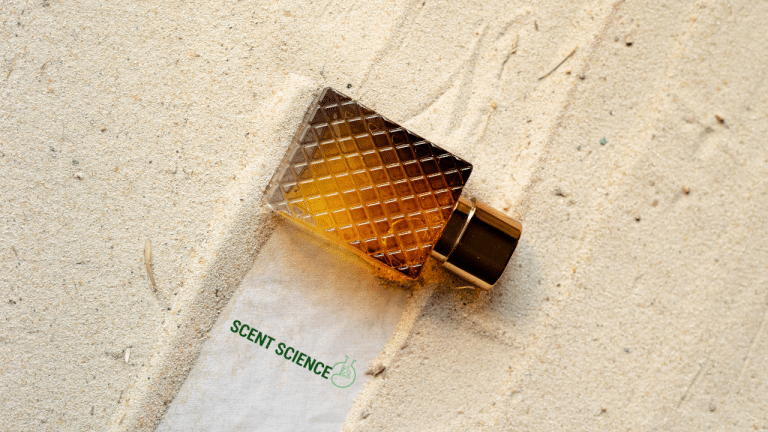Ever find yourself lost among the dizzying array of fragrances at a perfume counter, wondering what those mystery terms like “top notes” or “base notes” actually mean? You’re not alone. Let’s face it, choosing a perfume isn’t just about picking a random bottle, it’s way more intricate than that. Understanding perfume notes can completely change how you experience a scent, and even how you find your own signature fragrance. So let’s break it down, shall we? This is a no-pressure chat about perfume notes, where you’ll get a fresh perspective.
Table of Contents
ToggleWhat Are Perfume Notes Anyway?
Alright, let’s get to the heart of it—pun kind of intended! Perfume notes are essentially the various layers of scents that you experience when you apply fragrance to your skin. Think of perfume as a musical composition where each note harmonizes perfectly with the others.
The Three Act Play: Top, Middle, and Base
Perfume is typically built up of three main types of notes: top, middle (or heart), and base. Each stage of the perfume burnishing story has its own character and timeline. Here’s the deal:
- Top Notes
- These are the first impression-makers. Quick to evaporate, they set the stage for your fragrance. Top notes are light and sharp, catching your nose immediately.
- Common examples? Think citrus, like lemon or bergamot, and herbs like lavender or basil. These notes have a bright, lively flair—perfect for waking up your senses.
- Middle Notes (Heart Notes)
- Imagine these as the storyline of your fragrance. They sneak in just as the top notes begin their quiet exit. It’s the heart of your fragrance, literally, taking over the stage for a few hours.
- Middle notes often include bloomers like rose, jasmine, and ylang-ylang, or spicier vibes like cinnamon and cardamom.
- Base Notes
- These are the grand finale, the scents that echo through the entire day or evening. They blend with the middle notes to enhance complexity. Base notes are what you’ll remember at the end of it all.
- Here, you’ll find a mix of warmth and depth. Vanilla, musk, amber, and sandalwood make repeated appearances, carrying a powerful and lingering trail.
Why Knowing Perfume Notes Matters

Have you ever sprayed on a perfume, felt head over heels in the store, then it morphed into something else you’re less thrilled about after an hour? Perfume notes hold the key. By knowing how these play out, you can anticipate how a scent evolves—and potentially avoid a long-lasting letdown.
Suppose you love floral overtones that don’t just fly away with the flippant top notes—zero-in on those heart notes instead. Learning about fragrance families, which are often categorized by dominant notes (like floral, woody, or amber), sharpens this ability even more.
Setting the Mood with Fragrance Families
Fragrances can whisk you away to different times, places, or moods. Knowing your go-to smells can be life-enhancing, aiding stress relief, or providing an invisible cloak of confidence. Here’s a peek at different fragrance families defined greatly by their notes:
- Floral: bit self-explanatory, right? Floral perfumes showcase flowers. Sweet, romantic, and often considered feminine, they’re like a bouquet—roses, lilies, peonies.
- Oriental: often deeper and warm, ideal for a sultry evening. You’ll notice notes like spices—vanilla, cinnamon, along with sensual amber.
- Woody: earthly vibes grounded by sandalwood, cedarwood. These will give you a rustic, natural feeling. They have a peaceful and often unisex appeal.
- Fresh: punctuated by citrus, greens, and oceanic notes. Practical and refreshing, perfect for daytime wear. Think lemon zest in the morning air.
Building a Perfume Wardrobe: Where to Start?

Many folks stick to their favorite signature scent—and no shame in that game! However, just like clothes, having a few scent options—what you might call a “perfume wardrobe”—can be incredibly satisfying. Does this mean painstaking hours at the perfume counters? Not necessarily. Let’s explore some approaches!
Explore Scent Categories
Look over your personal favorites—whether from colognes, room fragrances, or even the herbs you use in cooking. Can you discern any patterns? Simple backyard earthiness, tropical notes, or perhaps gourmand-like sweet vanilla scents? Use these subtle clues to your advantage for adding new fragrances to your collection.
Season Matters
Just as you don’t wear woolen sweaters in the scorching summer or linen shirts during winter snow, match your scent to the season. Light, bright in spring, warm, spicy in winters. Keep this perspective and gradually enrich your olfactory experience over different times of the year.
Sample First
No need to commit fully upfront (rarely good advice, but especially for perfumes). Many stores provide samples or testers; don’t be shy to embrace them. They give you time to journey each note through its evolving dance before making the buying call.

Mix It Up: Layering Scents
Intrigued by orchestrating your scent symphony? Give layering a trick. While tricky, it’s about layering different perfumes at intervals or different points like wrists or neck to create a personalized unforgettable scent.
The Magic in Olfactory Memory
Ever notice how a single whiff of something can instantly yank you back to a memory long tucked away? That’s the magic of scent, deeply interwoven with memory and emotion. Your grandma’s garden rich with lilacs, a specific diner’s apple pie, or even the musty thrill within second-hand bookstores—it’s uniquely portable, transcending space and time with just notes.
Recipes for that unbeatable nostalgia could be just there on perfume shelves. What about creating your own scent-stirs, sparking memories for those around you too? Choose those notes thoughtfully, aim to evoke more than just a trail.
Final Bits: Perfume Notes Are Your %CUSTOM_NOTE%
You see, delving into perfume notes isn’t just about feeling fancy—it’s functional. It makes scent-sleuthing exciting, quick, and way more fun. Whether you’re crafting memories or twisting your emotions, perfume notes provide profound, transformative experiences neatly wrapped.
So, the next time you’re swirling that little test strip against your nose, remembering what we chatted about here. Perhaps that tricky perfume puzzle suddenly fits into pieces. Like anything unique, relish the imperfection and nuances amidst perfection and hone at your own pace—linger and learn with these aromatic stories. And who knows, you might discover a part of yourself hidden within those unfurling fragrance notes. Scentedly, of course!
Frequently Asked Questions
What are the benefits of using a hair mask in my hair care routine?
Using a hair mask can provide several benefits, including hydration, smoothing, strengthening, curl definition, heat protection, and damage repair. Hair masks infuse the hair with moisture, help coat the hair shaft to seal split ends, reduce breakage, and protect the hair from heat styling and environmental damage[1][4].
What ingredients should I look for in a hair mask?
Effective hair masks often include ingredients such as coconut oil, argan oil, shea butter, honey, avocado oil, green tea, and coconut water. These ingredients provide nourishment, moisturize, and protect the hair, offering benefits like softening, moisturizing, and protecting against damage[2][5].
How often should I use a hair mask in my routine?
You should use a hair mask whenever your hair feels dry, unmanageable, or in need of intense hydration. This can vary depending on your hair type and needs, but generally, using a hair mask once or twice a week can help maintain healthy and moisturized hair[1][4].
How do I apply a hair mask for the best results?
To apply a hair mask effectively, shampoo your hair first, then apply the mask, focusing especially on the ends where hair tends to be the most damaged. Leave the mask on for anywhere from 10 minutes to overnight, depending on the type of mask and your hair’s needs[1][4].
References







